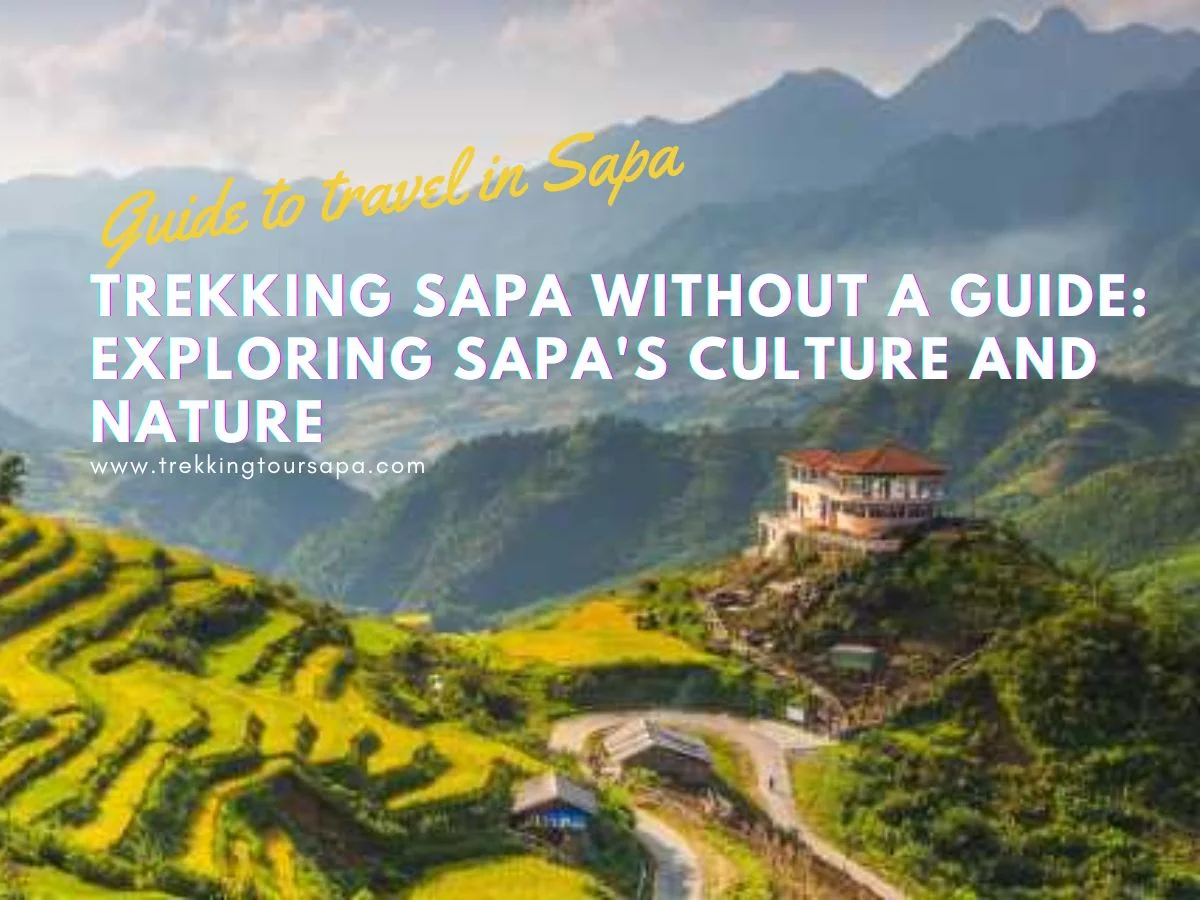Have you ever felt the urge to escape, to go on an adventure and explore somewhere new? If so, then a trek in Sapa might be just what you need, here we will see how to trekking in Sapa without a guide. Located in the mountains of Northern Vietnam, this stunningly beautiful region is known for its breathtaking views and vibrant culture. Whether you’re an experienced hiker or looking for your first foray into the world of trekking, here’s everything you need to know about tackling Sapa without a guide.

Sapa has become increasingly popular as a tourist destination over recent years; however, it still retains its wild charm – making it perfect for those seeking freedom from their everyday lives. With winding trails leading through lush green rice paddies and picturesque villages full of friendly locals, there’s something special about hiking through Sapa that will stay with you long after your journey ends. But can you tackle these treks alone?
The answer is yes! Trekking in Sapa certainly isn’t easy – but with some careful planning and preparation beforehand, it’s entirely possible to make the most of this remarkable corner of Vietnam without having to rely on a tour guide. In this article, I’ll take you through all the essential information needed when considering going off the beaten track in Sapa – from safety tips to my recommendations on where best to hike solo!
Table of Contents
ToggleOverview Of Sapa
Sapa is a small but stunning mountainous town in northern Vietnam. It’s like a diamond tucked away in the middle of rolling hills and lush greenery. With its breathtaking scenery, diverse culture, and incredible attractions, Sapa has become one of the most sought-after destinations for travelers seeking an unforgettable experience.
The area offers many opportunities to explore, including trekking through rice paddies or visiting traditional villages where you can learn about the local customs and cultures. There are also plenty of restaurants serving delicious regional cuisine that will tantalize your taste buds! The nearby Fansipan Peak is considered to be the roof of Indochina and it makes for an amazing day hike up some spectacular mountain terrain.

When visiting Sapa, don’t forget to take time out to appreciate its natural beauty. From terraced fields to cascading waterfalls, there is something here for everyone who loves nature photography. You can even witness unique cultural events such as traditional weddings or festivals – all just waiting to be discovered! Whether you come alone or with friends, Sapa promises an extraordinary adventure full of memories that you’ll never forget.
Climate And Terrain
Sapa is a beautiful and geographically diverse region of northern Vietnam. Its climate ranges from subtropical to alpine, with temperatures dropping as low as -3 degrees Celsius in the winter months. The terrain includes montane forests, grasslands, rice paddies, and alpine meadows that provide breathtaking views of the Sapa Valley.
- Climate: Subtropical to Alpine
- Terrain: Montane Forests, Grasslands, Rice Paddies, Alpine Meadows
- Views: Stunning vistas of Sapa Valley
- Activities: Hiking through stunning landscapes
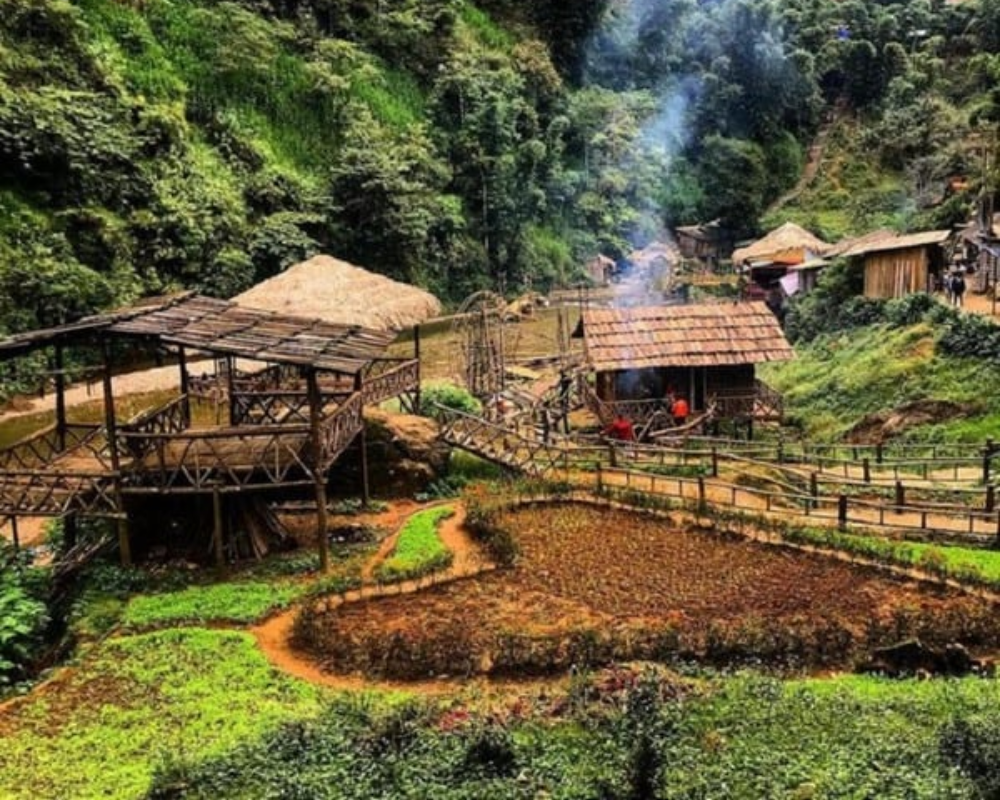
Exploring this incredible landscape without a guide can be an incredibly liberating experience; there are no limits on where you can go or how long you stay. You have complete freedom to take your time discovering all the hidden gems around every corner. From meandering along river banks to scaling mountains and trekking through lush jungles – it’s easy to see why so many adventurers come here seeking adventure. With such amazing scenery and well-marked trails throughout the area, there is something for everyone!
Now that we’re familiar with the climate and terrain of Sapa let’s look at safety considerations when planning a trip…
Safety Considerations
Trekking in Sapa without a tour guide is possible, but it is important to take the necessary safety precautions. According to statistics, more than 500 trekkers each year have experienced some sort of emergency while hiking in Sapa National Park. When setting out on your solo hike be sure to plan and check the weather forecast for any inclement conditions that may arise suddenly.
It’s also recommended to carry travel insurance and an emergency kit with you that includes a compass, first-aid supplies, a water filtration system, extra clothing, and snacks. Be aware of altitude sickness as well; hikes over 8500 feet can cause symptoms ranging from dizziness and nausea to difficulty sleeping or shortness of breath. If this happens during your trek stop immediately and descend until the symptoms subside.
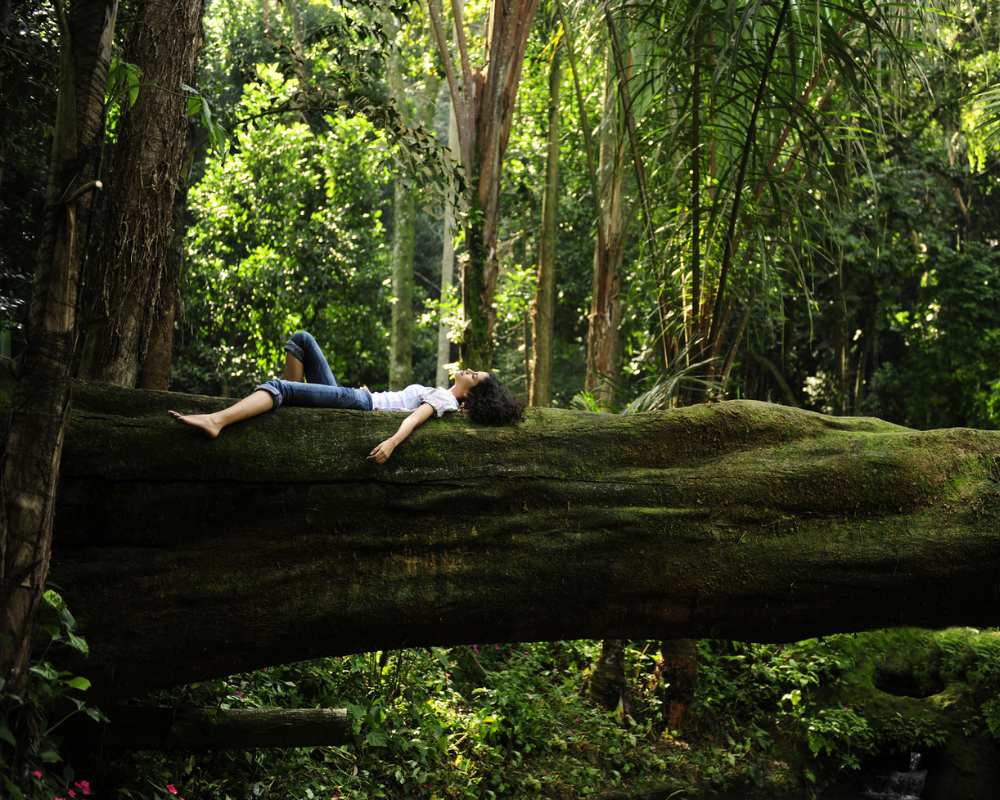
Finally, when planning your hike make sure you are familiar with the route so you don’t get lost along the way. It is always good practice to inform someone back home about where you’re going, what time you expect to return, and how much money you are carrying. Taking proper safety measures will help ensure a safe and enjoyable experience while trekking in Sapa Vietnam without a guide. With these considerations taken into account, all that’s left is deciding what items to bring with you on your journey!
What To Bring With You
Trekking in Sapa, Vietnam without a guide is an unforgettable experience. As you plan your trek, here are some things to keep in mind and bring with you!
| Item | Description | Importance |
|---|---|---|
| Hiking Boots | Durable shoes that provide ankle support and traction for the trails. | Essential |
| Sun Protection (hat, sunglasses) | Protect your eyes and skin from the sun’s rays by wearing hats or UV-blocking shades. | Highly Recommended |
| Insect Repellent & Medical Supplies | Apply insect repellent before heading out and pack basic medical supplies such as bandages, antiseptic cream, etc. in case of emergency. | |
| Snacks & Water Bottle | Bring along snacks like energy bars/trail mix and refillable water bottles to stay hydrated during the hike. |
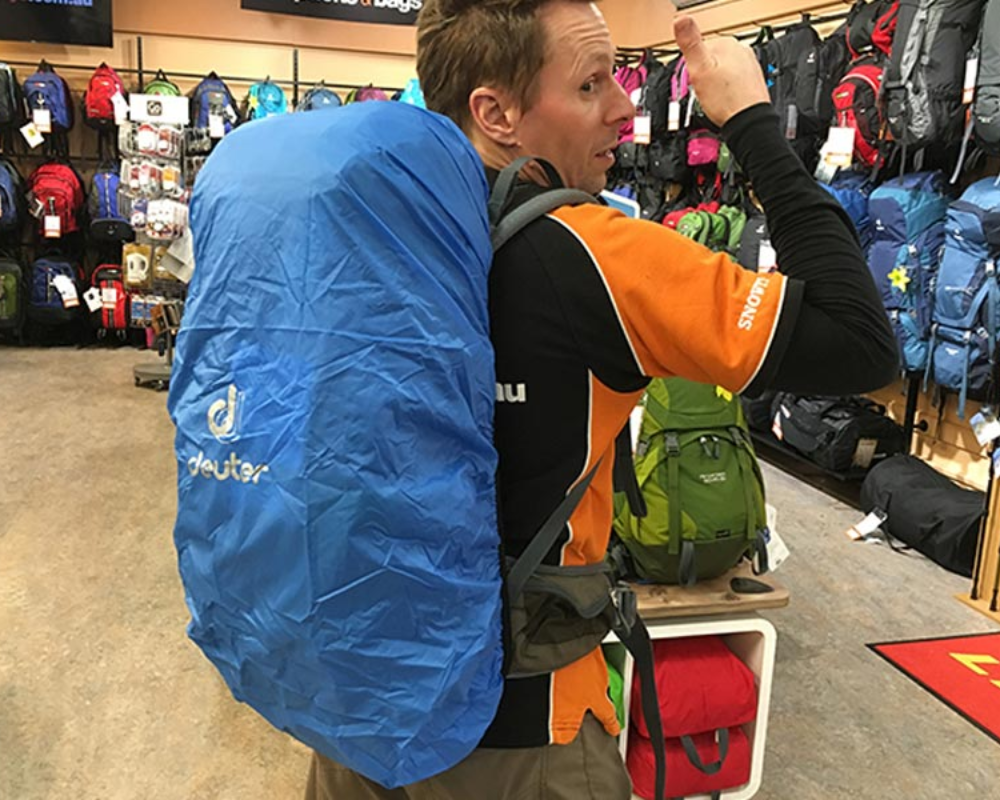
Having all these items will ensure a safe and enjoyable journey! Remember to also wear comfortable clothes made of breathable materials so you don’t get too hot or cold. And it’s always good to have a map handy just in case you need help finding your way back home after the trek. To make sure everything goes smoothly on the day of the trek, remember to prepare accordingly – plan and check current weather conditions before setting off on your adventure!
Prepare For The Trek
Heading out on a trek in Sapa without a guide can be an exhilarating experience if you prepare properly. Here are some key items to consider before setting off:
- Make sure you have the right trekking gear and supplies. Invest in good quality, comfortable trekking clothes that will protect you from the elements while keeping your body temperature regulated. Don’t forget to pack plenty of water, sunscreen, bug spray, and snacks for energy along the way.
- Create a comprehensive checklist of everything from food and clothing to maps and emergency supplies. Double-check that all items are accounted for so nothing is forgotten during your journey.
- Research the terrain beforehand and familiarize yourself with any potential risks or hazards such as wild animals or difficult weather conditions. Knowing what challenges could lie ahead will help you plan accordingly and stay safe during your adventure.
With these tips in mind, it’s time to start planning your itinerary!
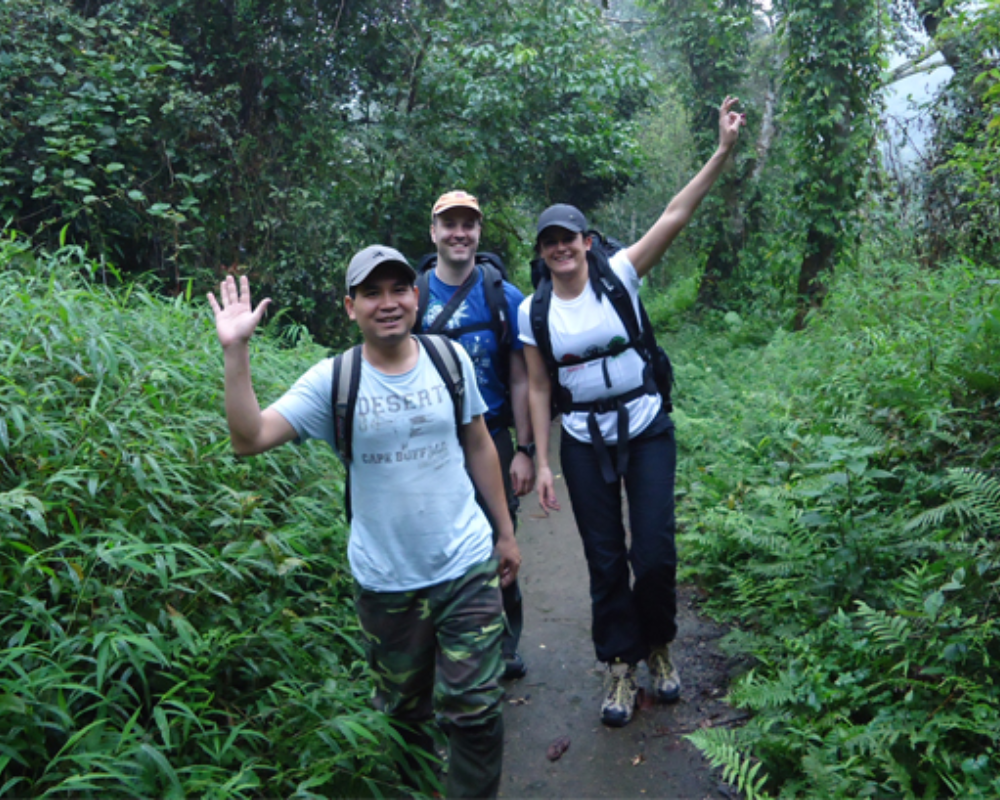
Planning Your Itinerary
Trekking in Sapa is a great way to explore the region and its many attractions. When planning your trekking itinerary, consider how much time you have available and what type of adventure you want to experience. A good starting point for trekkers is to determine what routes are available and which ones suit their needs best.

For example, if you’re looking for an easygoing journey with plenty of sightseeing opportunities along the way, then following well-known trails like Cat Cat Village or Lao Chai, Tavan may be ideal. These popular routes offer stunning views of terraced rice paddies, traditional stilt houses, vibrant Hmong villages, and other local sites of interest. On the other hand, more experienced hikers may prefer something more challenging such as climbing Fansipan Mountain – Vietnam’s highest peak at 3143 meters above sea level – or navigating some of the rugged off-the-beaten-path trails that traverse through mountain passes and remote valleys hidden among dense forests.

No matter which route you choose, it’s important to research thoroughly before embarking on any trekking trips in Sapa so that you’re adequately prepared for whatever terrain lies ahead. This means packing appropriate clothing and footwear, bringing enough supplies (including water) for multiple days out in nature, hiring knowledgeable guides when necessary, familiarizing yourself with safety protocols, and getting up-to-date information about weather conditions and seasonal road closures from reliable sources. With proper planning and preparation, there’s no limit to where your adventures can take you!
Types Of Trekking Routes
If you’re looking for a thrilling way to explore Sapa, trekking without a guide is an option. Various types of routes (our best hikes near Sapa) cater to different needs and levels of experience.
| Trek Type | Difficulty Level (1-5) | Highlights |
|---|---|---|
| Easy Trekking Routes ( Sapa day tour) | 1-2 | Hill tribe village treks, short day hikes |
| Trekking For Beginners | 2-3 | Multi-day treks, mountain treks with panoramic views |
| Moderate Treks | 3-4 | Longer multi-day treks at higher altitudes |
| Advanced Treks | 4-5 | Mountain ascents and technical climbs or descents |
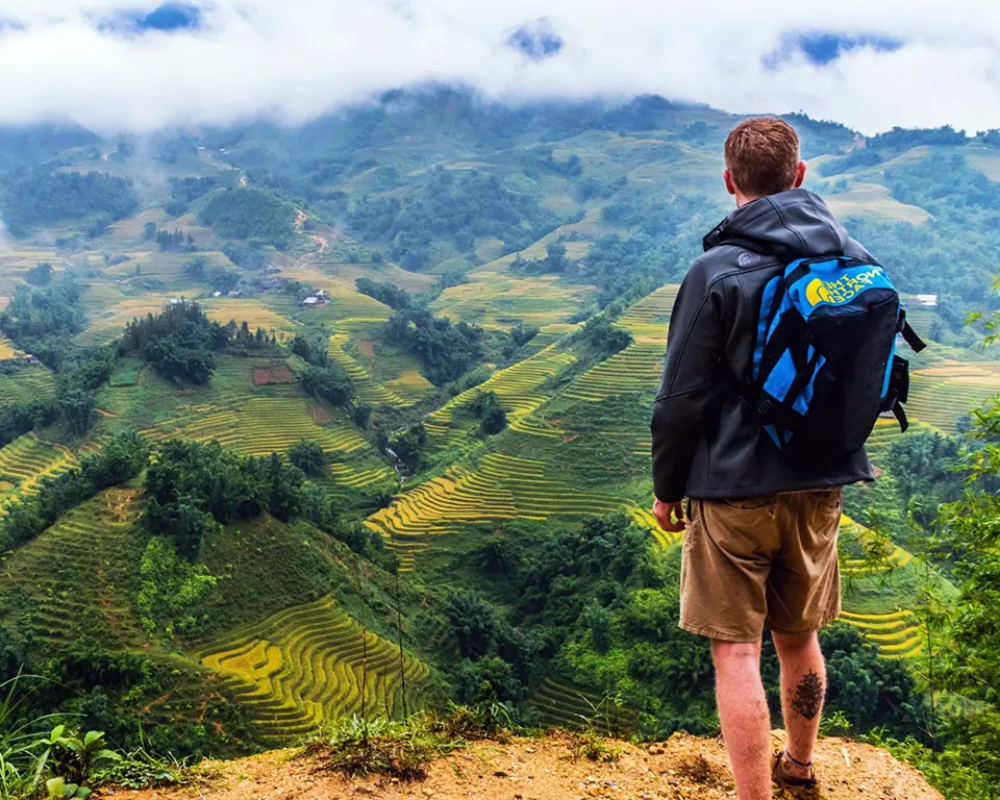
Whether you’re a beginner eager to learn the ropes or an experienced outdoor enthusiast in search of adventure, there’s something for everyone when it comes to trekking in Sapa. The stunning countryside offers spectacular terrains from lush valleys to rugged mountains, providing ample opportunity for exploration and discovery. With so many incredible options available, why not embark on an unforgettable journey through this magical region? Now that we’ve discussed the various types of trekking routes, let’s take a look at some popular destinations in Sapa.
Sapa 1 Day Tours
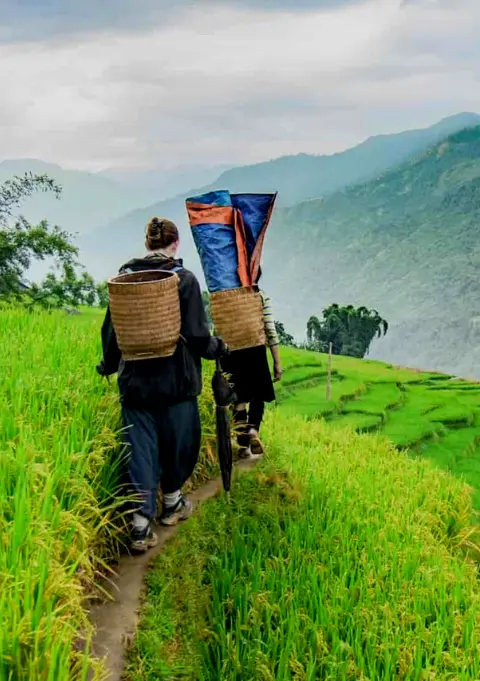
- 1 day experience
- Moderate to challenging
- Cultural immersion & active adventure
- Rice fields, valleys & villages
- Private tours
- Vegan-friendly
Sapa 2 Day Tours
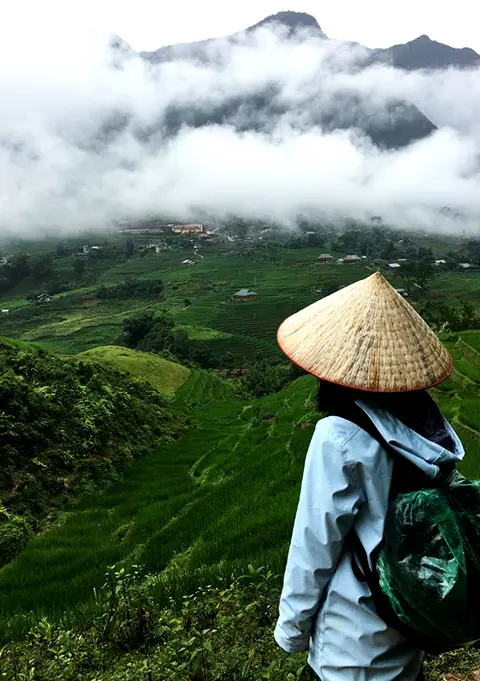
- 2 days 1 night experience
- Moderate to challenging
- Cultural immersion & active adventure
- Mountains, valleys, rice fields and villages
- Private tours
- Vegan-friendly
Sapa 3 Day Tours
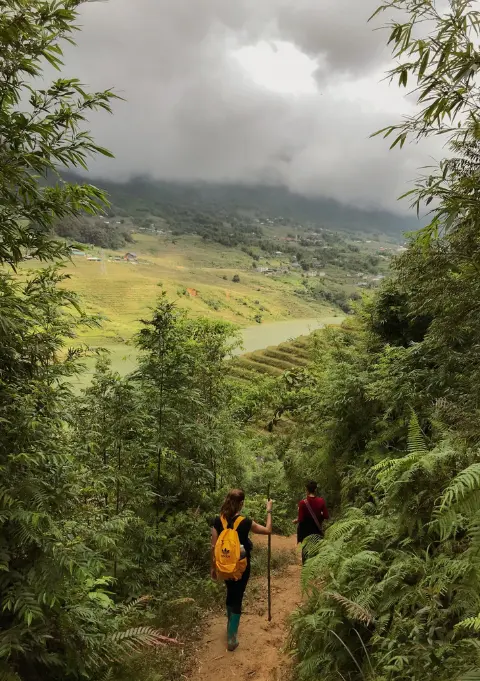
- 3 days 2 night experience
- Moderate to challenging
- Cultural immersion & active adventure
- Mountains, valley, rice fields & villages
- Private tours
- Vegan-friendly
Sapa 4 Day Tours
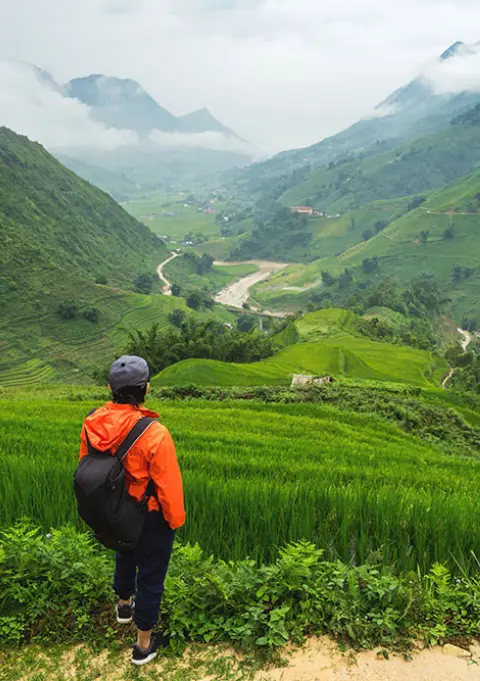
- 4 days 3 night experience
- Moderate to challenging
- Cultural immersion & active adventure
- Mountains, valleys, rice fields & villages
- Private tours – Less Touristic
- Vegan-friendly
Popular Destinations In Sapa
Exploring Sapa is an absolute delight. With its stunning vistas, lush rice terraces, and quaint villages, it’s no wonder so many travelers flock to this special corner of the world each year. Whether you opt for a guided tour or take the time to explore independently, there are plenty of amazing sights awaiting your discovery.
For those looking to get away from the crowds and enjoy some peace, Sao Sanh Village is a great option. Located in a tranquil valley near Ma Tra village, Sao Sanh offers sweeping views of the surrounding countryside. Here you can find traditional houses with impressive architecture and locals who will be more than happy to show you around their homes.
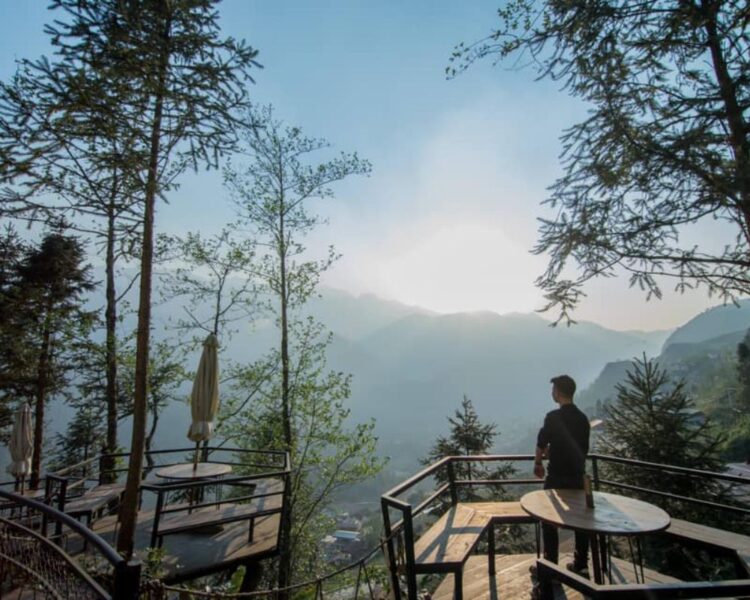
Cat Cat Village is another must-see destination while in Sapa. This small mountain village has been home to generations of Hmong people, who still live off the land and practice age-old traditions. Take a stroll through town to admire colorful wooden houses nestled among terraced fields as well as lively markets selling handmade textiles and other local crafts.
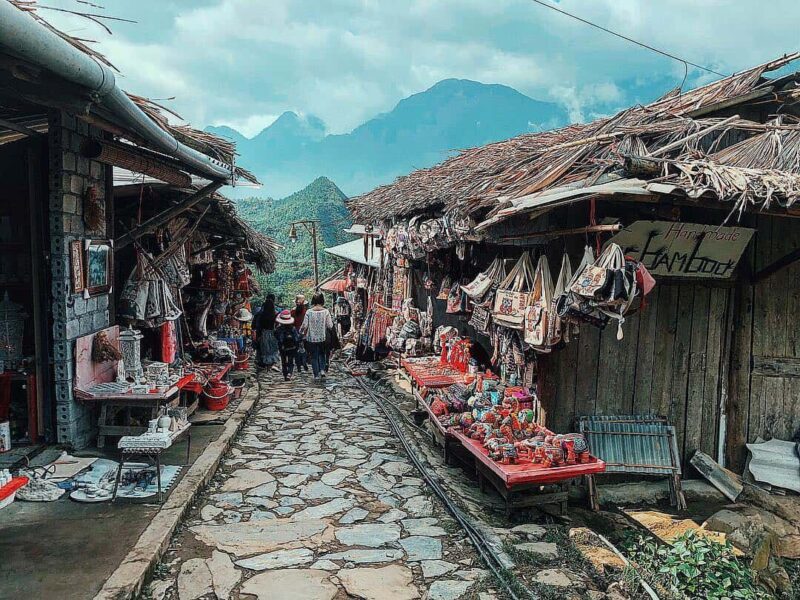
Accommodation Options
If you’re planning a trip to Sapa, one of the most important decisions you’ll have to make is where to stay. After all, this remote mountain region offers some incredible trekking experiences, so you’ll want an accommodation that suits your needs and budget.
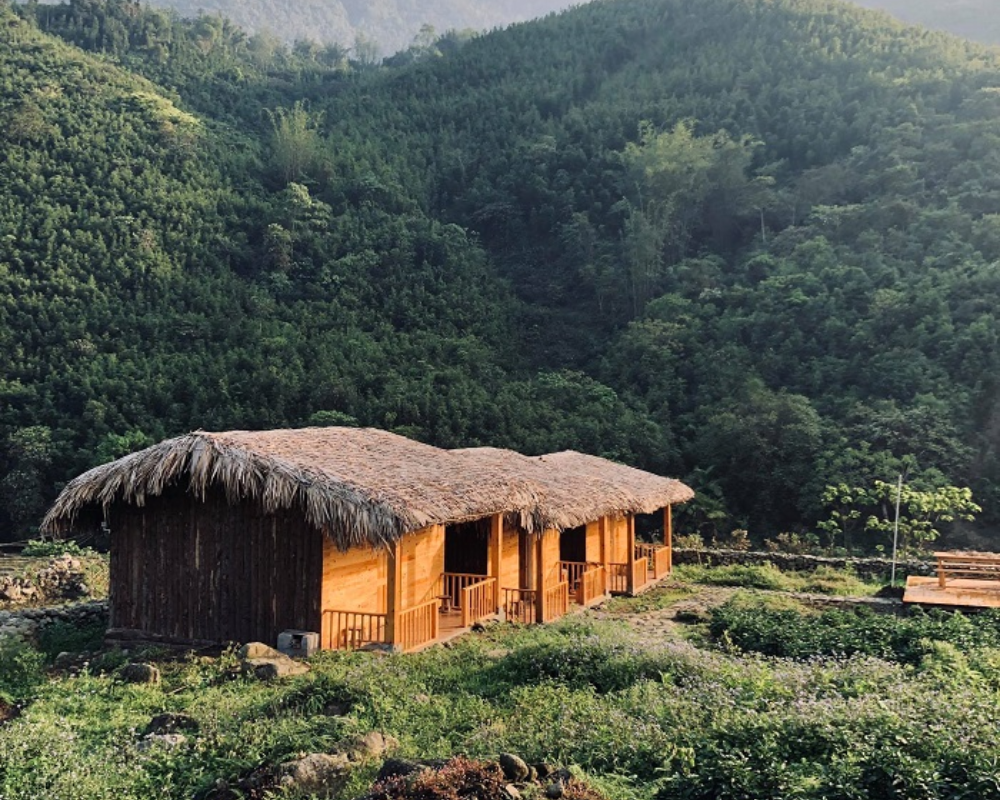
For those wanting to explore Sapa without a tour guide or local expert, there are plenty of options for self-guided treks with overnight stays in different accommodations. Here’s a quick rundown of what’s available:
- Hostels: These provide basic but comfortable places to sleep at an affordable price. Plus, many hostels offer additional services such as bike rental and guided walking tours through nearby villages.
- Budget Hotels: If you don’t mind spending a little more money on your accommodation, then budget hotels can be great options in Sapa. Many come with amenities like air conditioning, hot showers, and Wi-Fi access which makes them ideal for travelers who need something extra during their stay.
- Luxury Resorts: For those looking for absolute luxury while visiting Sapa, there’s nothing better than staying at one of the area’s high-end resorts. With stunning views of the rice terraces below and top-notch facilities including private balconies and spas, these properties will take your vacation experience up another level.
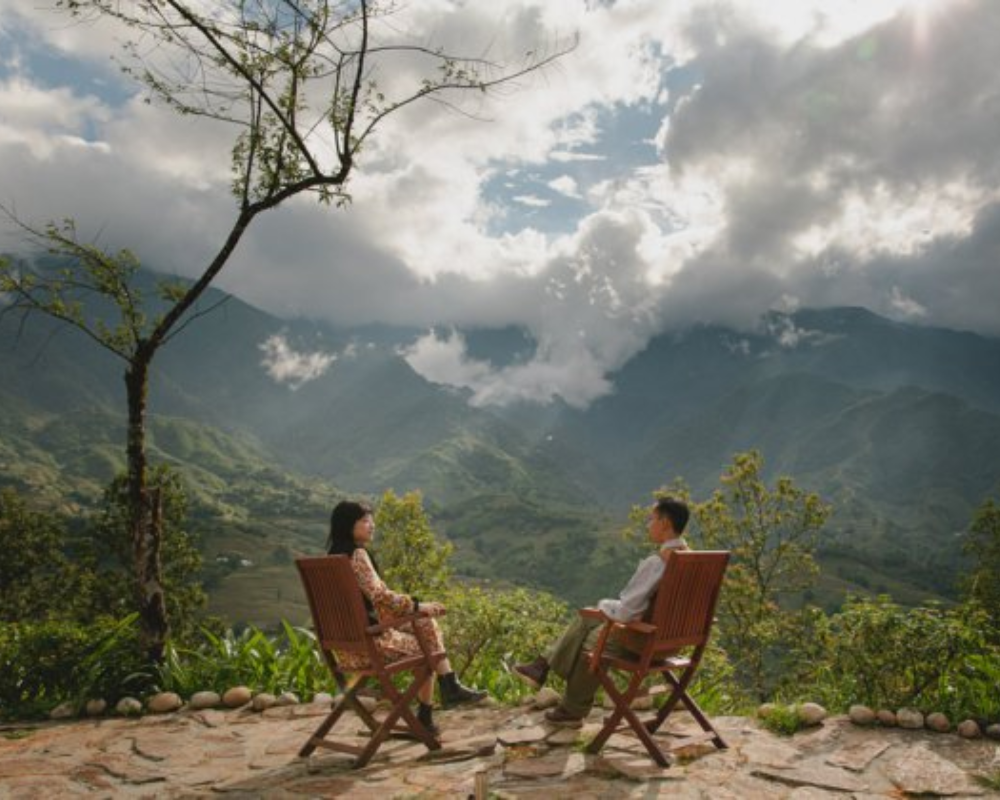
No matter where you choose to stay in this beautiful corner of Vietnam, it’s sure to be an unforgettable adventure! From cozy hostels to luxurious resorts – whatever type of accommodation you decide on – rest assured that each option has its unique charm that will leave you feeling refreshed and relaxed after your time in Sapa! Now let’s move on to optional tour guides…
Optional Tour Guides
If you’re looking to trek in Sapa without a guide, it’s possible. Although hiring an experienced local tour guide can provide invaluable insight into the region and its culture, it is ultimately up to each traveler to decide what kind of experience they want. That being said, here are some pros and cons for both options:
| Pros | Cons |
|---|---|
| In-depth insights from experienced guides Safer treks with fewer risks Learning about different cultures & customs | Additional cost for hiring guide Less flexibility for routes & activities Guides may not always be available during peak seasons |
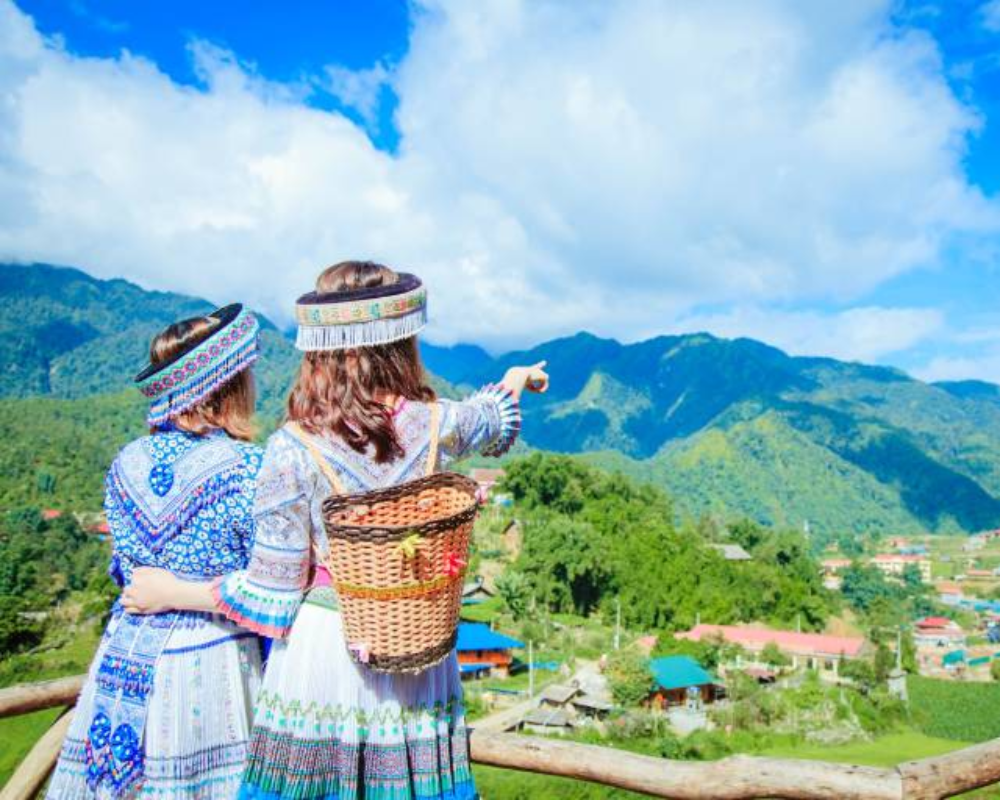
The decision whether or not to hire a tour guide depends on your preferences as a traveler. Going solo may be the better option for those who desire more freedom and flexibility while exploring Sapa. On the other hand, if safety and cultural immersion are priorities, then investing in an optional tour guide would likely be beneficial.
When considering this option, travelers should also think about the additional costs associated with hiring professional guides. The price will vary depending on how long you plan on trekking and which services you wish to include – like meals or transportation. Ultimately, weighing all these factors carefully before making any decisions is key.
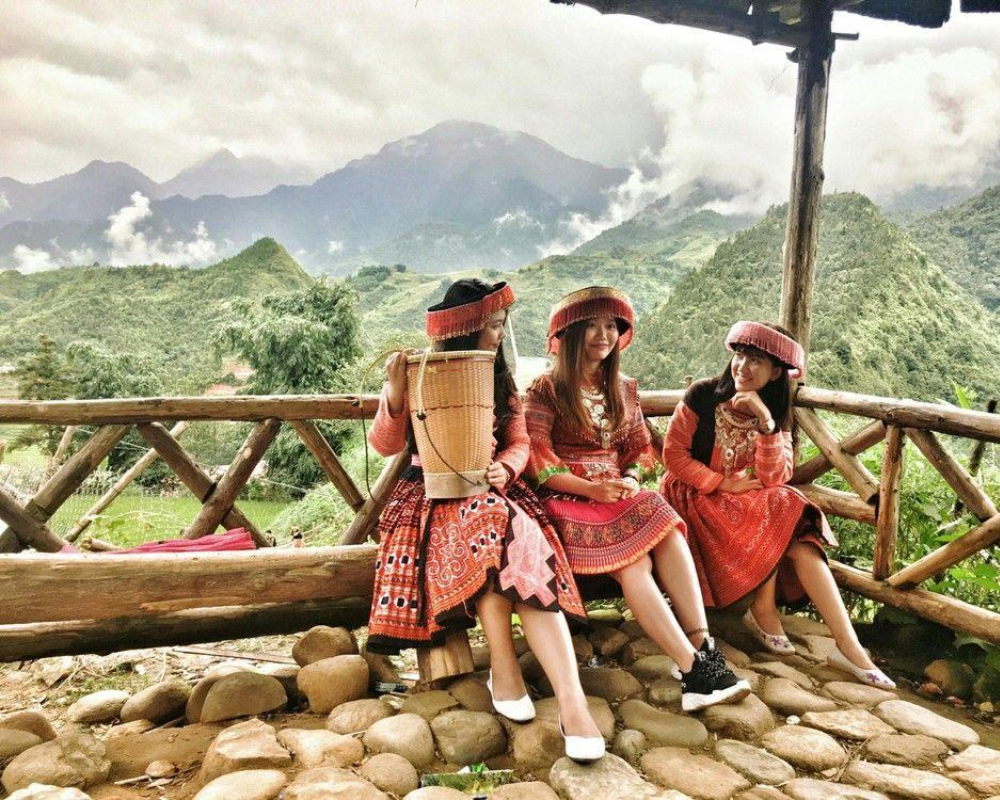
Regardless of your choice, there’s no denying that trekking through Sapa offers an unforgettable experience!
Cost Of Trekking Without A Guide
Trekking in Sapa without a tour guide is certainly possible and can be a great way to explore the region independently. The cost of trekking solo will depend on your individual needs, but generally, it’s cheaper than signing up for an organized tour with a Sapa guide. Depending on what you need for the trip such as food and accommodation, you could end up saving quite a bit of money by choosing to trek solo for your Sapa 1 day trek or many days trek.
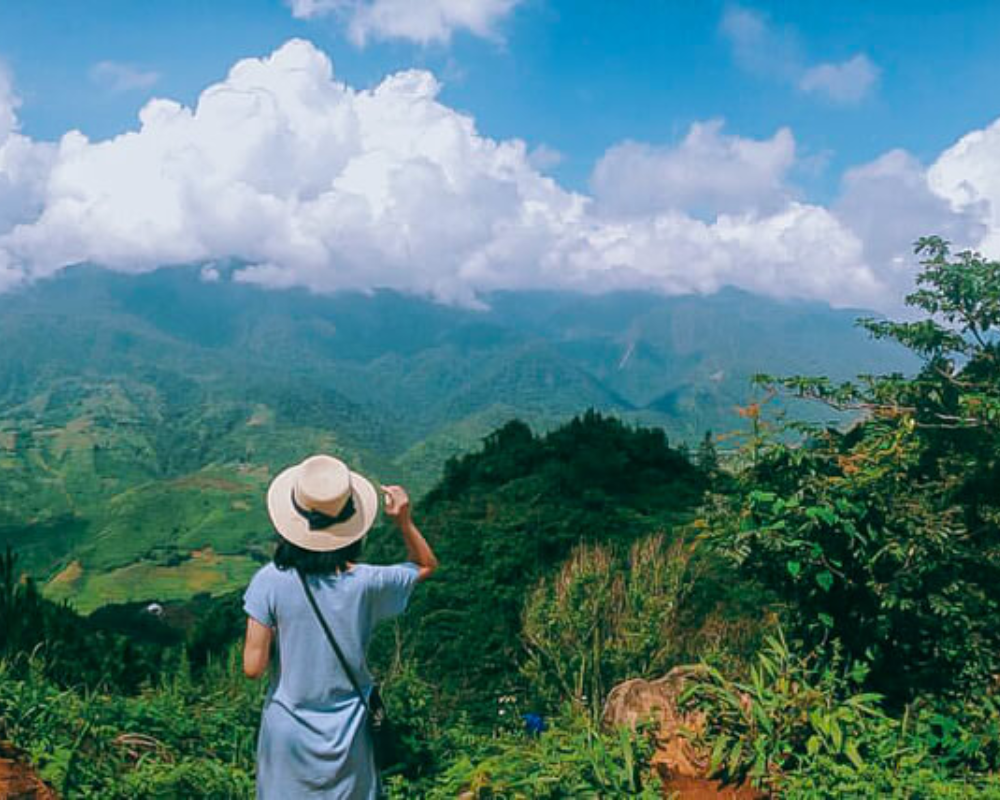
If you’re looking to save even more money, there are plenty of ways to do that while still having a safe and enjoyable experience. For example, it may be worth considering staying in hostels or homestays rather than hotels since they tend to offer better value for money. You should also look into local transport options like buses and taxis instead of private car hire if you want to keep costs down. Additionally, you can pick up supplies from markets or stores ahead of time so that you don’t have to purchase them during your trek at inflated prices.
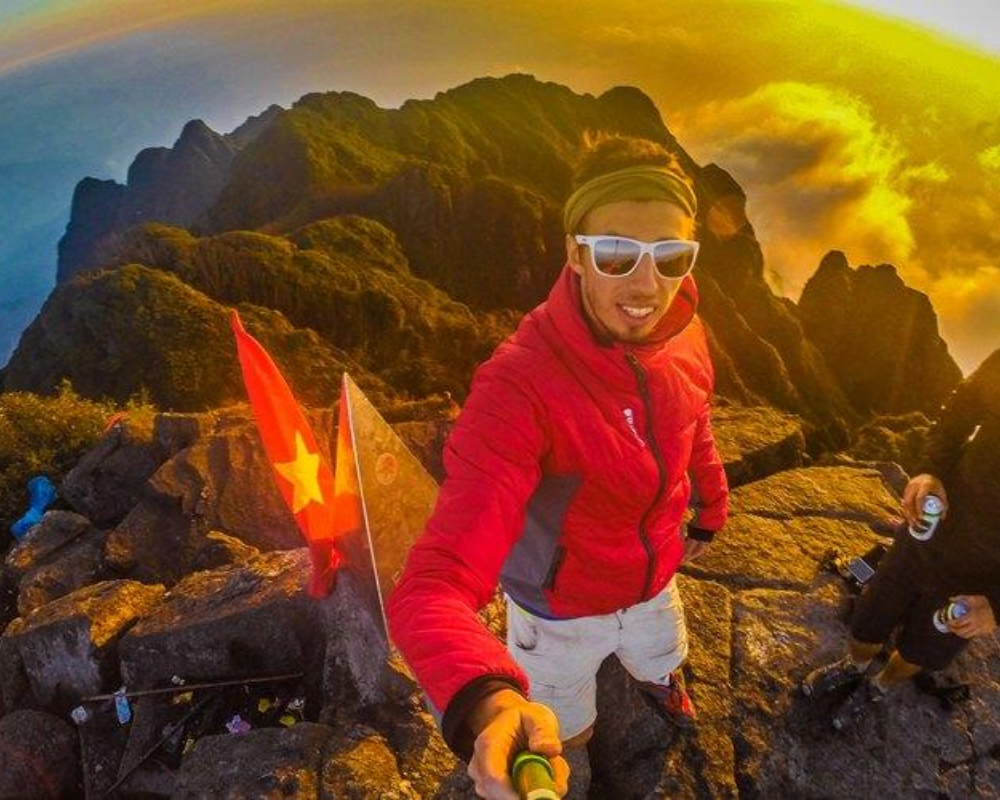
Solo treks in Sapa offer many advantages over guided tours including flexibility and freedom to choose where you go and how long you stay at each destination. Plus, traveling alone allows you to meet locals more easily and learn about their culture firsthand! Of course, it’s important to remember basic safety precautions when taking part in any outdoor activity – wear appropriate clothing, let someone know where you are going, and bring enough water & snacks with you just in case! With these tips in mind, embarking on a solo journey through Sapa promises an unforgettable adventure full of unique experiences and breathtaking scenery.
Sapa 1 Day Tours

- 1 day experience
- Moderate to challenging
- Cultural immersion & active adventure
- Rice fields, valleys & villages
- Private tours
- Vegan-friendly
Sapa 2 Day Tours

- 2 days 1 night experience
- Moderate to challenging
- Cultural immersion & active adventure
- Mountains, valleys, rice fields and villages
- Private tours
- Vegan-friendly
Sapa 3 Day Tours

- 3 days 2 night experience
- Moderate to challenging
- Cultural immersion & active adventure
- Mountains, valley, rice fields & villages
- Private tours
- Vegan-friendly
Sapa 4 Day Tours

- 4 days 3 night experience
- Moderate to challenging
- Cultural immersion & active adventure
- Mountains, valleys, rice fields & villages
- Private tours – Less Touristic
- Vegan-friendly
Tips For Traveling Solo In Sapa
Trekking solo in Sapa can be a fantastic experience. But, it requires some preparation and planning to ensure a safe and enjoyable journey. As a solo tourist, here are some tips for trekking in this beautiful region of Vietnam.
First and foremost, make sure you have the right equipment before setting off on your adventure. Investing in quality hiking boots and clothes is essential as they will keep you comfortable and dry during the trip. Additionally, bring plenty of water with you so that you don’t get dehydrated while out on the trails. Pack food that won’t spoil easily and don’t forget to include first aid supplies such as antiseptic cream and bandages just in case!
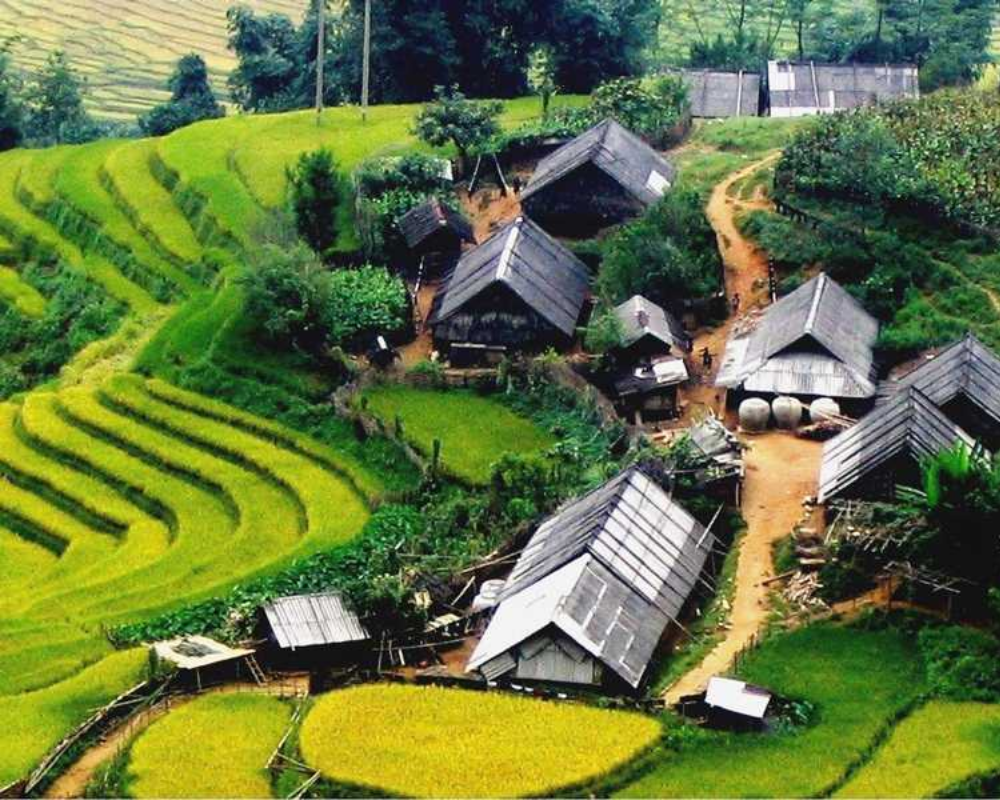
Second, research carefully beforehand so that you know exactly where you’re going. Find out information about the terrain, weather conditions, local customs, etc., so that you can plan accordingly. If possible try to partner up with another hiker or join an organized tour – this way you’re more likely to stay safe if something goes wrong along the way. Lastly, take breaks throughout your hike whenever necessary; taking short rests between longer treks helps prevent fatigue from settling in too quickly.
Solo trekking can be incredibly rewarding but also risky at times – following these few simple tips should help keep any solo traveler safe while exploring the beauty of Sapa. With all the proper preparations made ahead of time, there’s nothing stopping anyone from having a truly amazing experience! So why not grab your backpack and hit those trails? Wherever your journey takes you, we wish you luck!
Where To Find Information And Help
Traveling in Sapa solo can be a rewarding and freeing experience, but it’s important to know what resources are available if you need help or advice. Whether you’re trekking on your own or with a guide, here are some of the best sources of information and assistance:
- Tourist Information Centers – Most towns in Sapa have tourist information centers that offer helpful brochures, maps, and travel tips. In addition to providing advice about local attractions and activities, they may also be able to connect you with reliable guides who specialize in sapa trekking tours.
- Local Trekking Associations – Many areas in Sapa are known for their spectacular views, unique culture, and challenging treks. Joining an association like The Northern Vietnam Trekkers Association is a great way to find out more about the area as well as meet other experienced hikers who might be willing to show you around.
- Social Media Networks – Facebook groups such as “Sapa Trekker” contain thousands of members who post regularly about sapa trekking experiences and tips. You can interact with them directly by asking questions or joining conversations related to your trip-planning needs. Additionally, Twitter accounts like @sapatrek provide up-to-date news and reports from seasoned adventurers in the region.
- Online Travel Forums – If there’s something specific you want to know about trekking in Sapa without a guide then online forums such as Tripadvisor can provide answers from people who have been there before and give first-hand accounts of their experiences.
Sapa 1 Day Tours

- 1 day experience
- Moderate to challenging
- Cultural immersion & active adventure
- Rice fields, valleys & villages
- Private tours
- Vegan-friendly
Sapa 2 Day Tours

- 2 days 1 night experience
- Moderate to challenging
- Cultural immersion & active adventure
- Mountains, valleys, rice fields and villages
- Private tours
- Vegan-friendly
Sapa 3 Day Tours

- 3 days 2 night experience
- Moderate to challenging
- Cultural immersion & active adventure
- Mountains, valley, rice fields & villages
- Private tours
- Vegan-friendly
Sapa 4 Day Tours

- 4 days 3 night experience
- Moderate to challenging
- Cultural immersion & active adventure
- Mountains, valleys, rice fields & villages
- Private tours – Less Touristic
- Vegan-friendly
Exploring new places often requires doing research beforehand so don’t feel overwhelmed when looking for sapa trekking resources—there are plenty of options out there! With these tools at your disposal, even novice travelers will feel confident venturing into this beautiful part of Northern Vietnam for adventure on their terms. Now let’s look at emergency services available in case one finds themselves needing help while traveling solo in Sapa…
Emergency Services In Sapa
Navigating Sapa can feel like maneuvering through a maze of streets, with hidden nooks and crannies around every corner. While it may be tempting to explore the city without any guidance, it is important for travelers to know about emergency services in Sapa and how they can access help if needed. After all, safety should always come first when traveling!

When it comes to medical care, there are several hospitals located in the area that provide quality treatment. The closest hospital is Vien Dong Hospital which has English-speaking staff and modern equipment. For more serious cases or evacuation services, tourists can call 911 or contact their embassy for assistance.
For visitors who need additional resources during their stay in Sapa, various organizations such as Global Rescue offer travel insurance packages that include 24/7 support from experts who will assist with on-ground coordination if an incident occurs while abroad. Furthermore, individuals can purchase satellite phones at local stores so they have access to reliable communication networks even in remote locations.
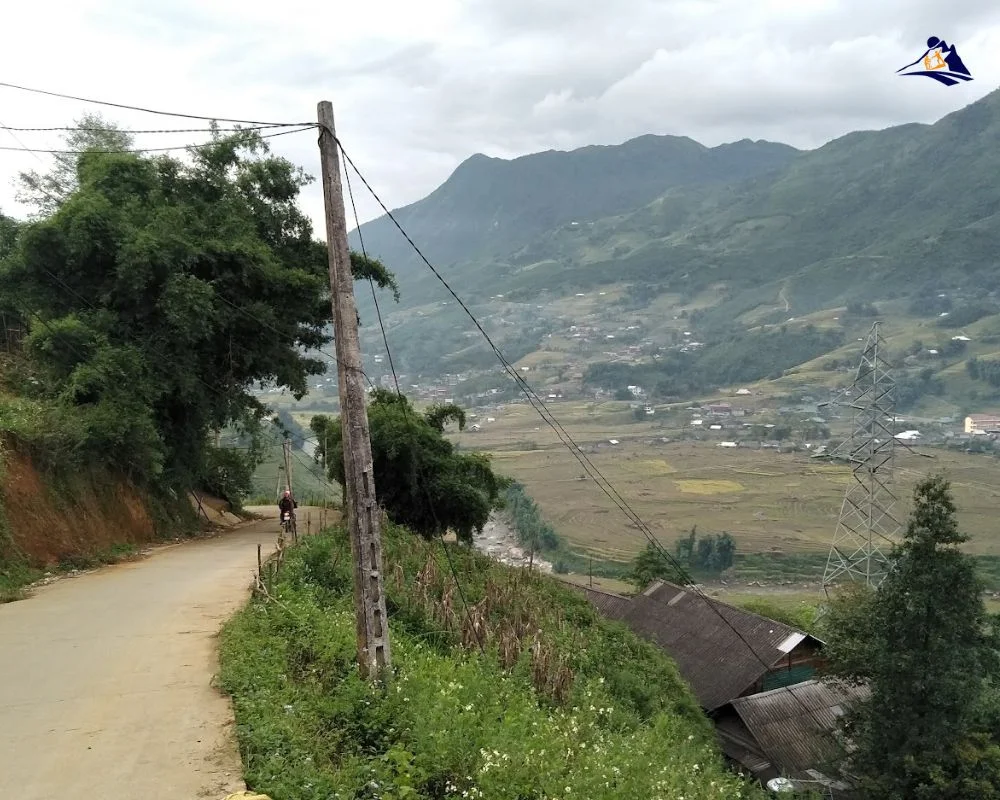
No matter what type of adventure you seek while visiting this stunning region of Vietnam, staying safe should remain your highest priority. With the right preparation and research beforehand, travelers can confidently embark on their journey knowing they have access to professional assistance and guidance if needed along the way.
Additional Resources
Exploring Sapa without a guide isn’t impossible, but it is highly recommended. With the vast rainforest and mountainous terrain of the region, trekking can be quite dangerous; not to mention difficult to navigate without an experienced local’s help. That being said, there are still plenty of resources available that can make your journey easier and safer.
| Type of Resource | Where You Can Find It |
|---|---|
| Sapa Travel Guide | Bookstores or online |
| Trekking Forums | Online communities |
| Sapa Maps | Local tourist bureaus |
| Sapa Blogs | Search engine results |
| Vietnam Trekking | Travel websites |
If you’re looking for more detailed information on where to go in Sapa, then finding a travel guide specifically about this area will be invaluable. Many bookstores carry these guides, as well as many online retailers like Amazon.
Additionally, there are numerous forums and social media groups dedicated to discussing trekking in Vietnam; with topics ranging from beginner tips to advanced routes, only locals would know. Also, if you have access to a local tourist bureau – such as one at your hotel – they’ll likely have maps outlining popular areas and trails for exploration.
For even more advice on things like safety protocols and gear recommendations, searching blogs written by seasoned travelers who’ve been to Sapa before can provide an abundance of helpful knowledge. And finally, don’t forget to look into any special deals or discounts offered by travel websites catering specifically to those interested in trekking through Vietnam!
Sapa 1 Day Tours

- 1 day experience
- Moderate to challenging
- Cultural immersion & active adventure
- Rice fields, valleys & villages
- Private tours
- Vegan-friendly
Sapa 2 Day Tours

- 2 days 1 night experience
- Moderate to challenging
- Cultural immersion & active adventure
- Mountains, valleys, rice fields and villages
- Private tours
- Vegan-friendly
Sapa 3 Day Tours

- 3 days 2 night experience
- Moderate to challenging
- Cultural immersion & active adventure
- Mountains, valley, rice fields & villages
- Private tours
- Vegan-friendly
Sapa 4 Day Tours

- 4 days 3 night experience
- Moderate to challenging
- Cultural immersion & active adventure
- Mountains, valleys, rice fields & villages
- Private tours – Less Touristic
- Vegan-friendly
No matter what route you decide is best for you while visiting Sapa, doing some research beforehand will always pay off when it comes time for exploring the great outdoors! With just a little bit of preparation and dedication, you’ll be ready to embark on the adventure of a lifetime.
Frequently Asked Questions
What Is The Best Time Of Year To Trek In Sapa?
Trekking in Sapa is a great way to experience the beauty of this remote area. But when it comes to deciding on the best time to trek Sapa, there are several factors that you should consider. Depending on your preferences and expectations, different seasons will offer unique experiences. From weather conditions to seasonal activities, here’s everything you need to know about trekking during different times of the year in Sapa.
When considering the weather for trekking Sapa, many travelers prefer the spring or fall months when temperatures are milder than at other times of the year.
During these months, the days tend to be sunny but not too hot; ideal for exploring without having to worry about extreme heat or cold. In addition, during springtime wildflowers make an appearance adding color and vibrancy to the landscape – perfect if you’re looking for something more than just beautiful hillsides.

However, some people enjoy trekking in Sapa during its rainy season (May-September). Although this season brings with it lots of showers and mudslides that can cause trails and roads to become difficult to traverse, those who don’t mind getting their feet wet get rewarded by lush vegetation and fewer crowds due to favorable weather conditions such as lower humidity levels and moderate temperatures. Those who do decide against trekking during monsoon should take extra care because heavy rains can lead to slippery surfaces making them dangerous for hikers.
Winter has its charm when it comes to Trekking in Sapa. For starters, winter offers clear skies with little rain which means less chance of muddy paths disrupting your journey.
Additionally, stunning views from higher altitudes open up thanks to snow melting away any foggy air below 1000m – providing travelers with panoramic vistas like never before! Plus Winter is prime time for bird watching since migratory birds flock over from nearby countries giving amateur photographers plenty of opportunities to capture amazing shots!
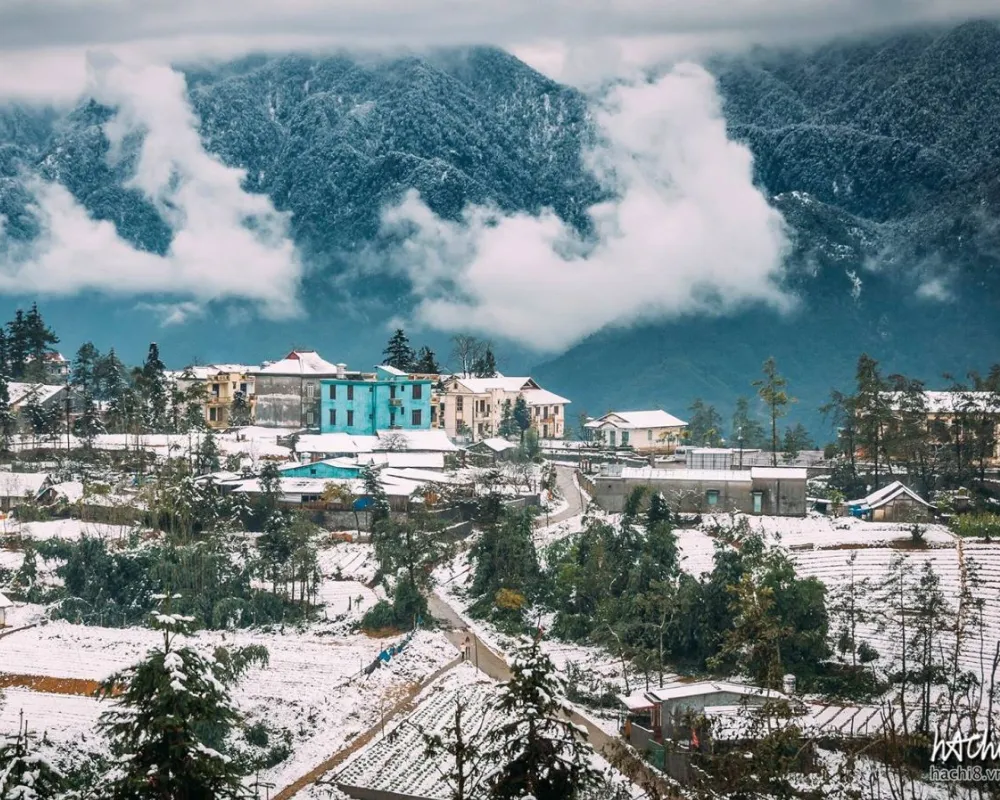
No matter what time of year you choose for your trip though, one thing’s certain: Trekking in Sapa provides unforgettable memories that last a lifetime! So why wait? Pack your bags today and explore all this magical corner of Vietnam has to offer!
Are There Any Age Restrictions For Trekking In Sapa?
Trekking in Sapa is a truly unique experience that many travelers long to take. But before heading out, it’s important to consider the age restrictions for trekking in this stunning region of Vietnam.
When it comes to trekking in Sapa, there are no strict age limits or restrictions on who can participate. However, it’s still important to be aware of and respect any local rules or regulations when planning your trip. Generally speaking, most tour operators will not accept children under 10 years old as they may find the terrain too strenuous. Anyone with existing medical conditions should seek medical advice before embarking on their journey.
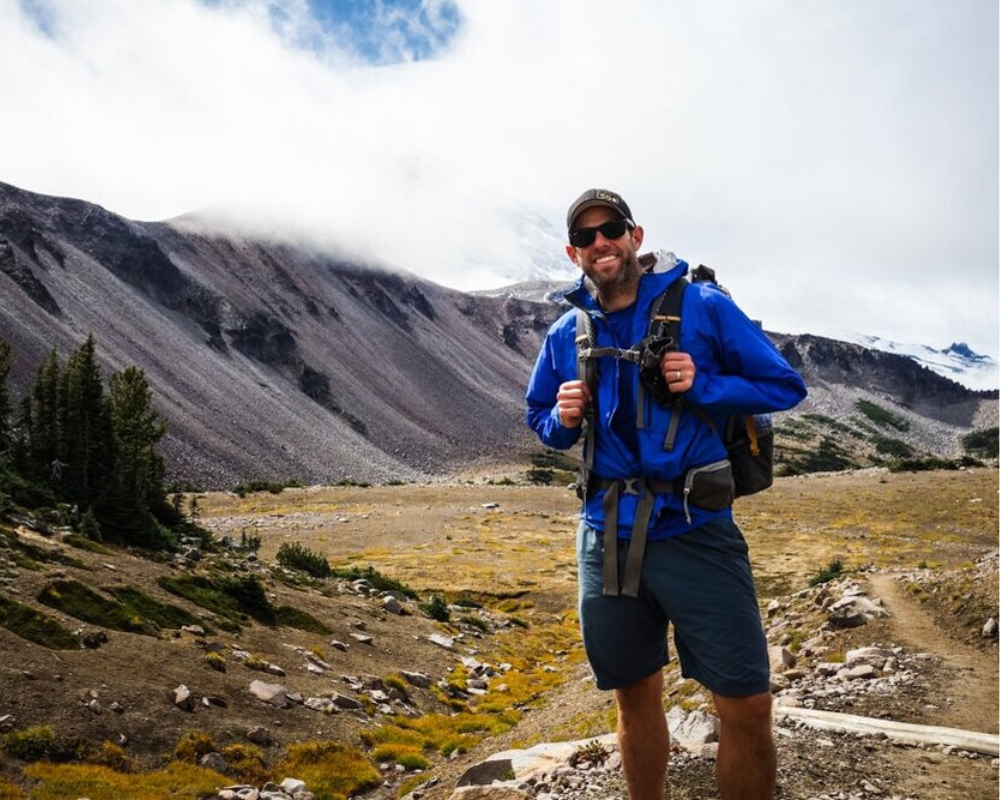
For those looking to explore the majestic beauty of Sapa on foot, here are some points to bear in mind:
- Make sure you’re fit enough for the challenge;
- Wear appropriate clothing and shoes;
- Bring plenty of water;
- Don’t forget essential items such as sunscreen and insect repellent!
It’s worth noting that although there aren’t specific legal requirements regarding age limits for trekking in Sapa, visitors should always err on the side of caution and use common sense when deciding whether an individual has the necessary level of fitness required for tackling rugged trails and steep inclines. After all, safety must come first! So if you’re considering taking a sapa trekking adventure, make sure you do your research beforehand so you know exactly what you’re getting into – both physically and mentally!
Are There Any Special Permits Needed For Trekking In Sapa?
Are you planning to go trekking in Sapa? If so, it’s important to understand the permit requirements. After all, who wants their trip interrupted by a run-in with local authorities? To help make your adventure smooth sailing, let me give you an overview of what you need to know about trekking permits for sapa.
First things first, the requirement for obtaining trekking permits depends on where exactly you are going and how long your stay is. For instance, if you plan on visiting any national parks or nature reserves then you will likely need a special permit from the local government office. Additionally, some villages may require visitors to apply for a separate permission document before entering their territory.
Sapa 1 Day Tours

- 1 day experience
- Moderate to challenging
- Cultural immersion & active adventure
- Rice fields, valleys & villages
- Private tours
- Vegan-friendly
Sapa 2 Day Tours

- 2 days 1 night experience
- Moderate to challenging
- Cultural immersion & active adventure
- Mountains, valleys, rice fields and villages
- Private tours
- Vegan-friendly
Sapa 3 Day Tours

- 3 days 2 night experience
- Moderate to challenging
- Cultural immersion & active adventure
- Mountains, valley, rice fields & villages
- Private tours
- Vegan-friendly
Sapa 4 Day Tours

- 4 days 3 night experience
- Moderate to challenging
- Cultural immersion & active adventure
- Mountains, valleys, rice fields & villages
- Private tours – Less Touristic
- Vegan-friendly
It’s also worth noting that there may be additional fees involved when applying for these types of documents:
- The cost can vary depending on location;
- A fee might have to be paid upfront;
- It could take several weeks to obtain certain permits;
- You may even need letters of recommendation from locals or community leaders.
On the other hand, if you’re just looking to explore areas outside of protected lands then chances are no paperwork will be required. However, keep in mind that this doesn’t mean that climbing mountains and trekking trails aren’t without their risks – always check conditions beforehand and be aware of potential hazards such as landslides or flash flooding. Also, remember that while exploring rural areas it’s important to respect cultural norms and traditions as well as private property boundaries (and don’t forget those insect repellents!).
No matter where your wanderlust leads you during your time in Sapa – having peace of mind knowing that everything is squared away when it comes to your legal standing goes a long way towards making sure that your journey is both safe and enjoyable!
Are There Any Specific Health Requirements For Trekking In Sapa?
Trekking in Sapa is a great way to experience the beauty of Vietnam. But before you embark on your adventure, it’s important to consider any health requirements for trekking in Sapa. When it comes to sapa trekking and treks through Sapa, there are some things you should know about staying healthy and safe during your journey.
First off, make sure you’re up-to-date with all of your vaccinations and medical checkups before heading out into the wilds of Sapa. It’s also recommended that travelers take along basic first aid supplies such as bandages, disinfectants, painkillers, etc., just in case something happens while trekking. Additionally, be sure to wear proper clothing and footwear suited for sapa trekking – long trousers tucked into boots or socks will help protect against cuts or insect bites when going through thick vegetation. And although drinking water can often be found along many trails throughout Sapa, it’s always prudent to bring plenty of bottled water so you stay hydrated – especially if temperatures get hot!

Finally, don’t forget that altitude sickness can occur at higher altitudes and might require additional precautions like taking more breaks between hikes and eating light meals. If symptoms do appear then it’s best to go back down the mountain until feeling better again – safety must come first! So with these tips in mind plus an eagerness for exploration, you’ll be ready for an incredible sapa health adventure without worry!
Are There Any Special Clothing Requirements For Trekking In Sapa?
Trekking in Sapa can be an amazing experience, but it’s important to make sure you’re well prepared. Special clothing requirements are key when planning your trip, as they’ll help ensure that you have a safe and enjoyable trek.
Your footwear is one of the most important pieces of equipment for any hike. Make sure you have some sturdy hiking boots – these will protect your feet from injury while providing support over uneven terrain. It’s worth investing in a pair with good ankle protection too! On top of this, pack warm clothes such as sweaters or jackets to keep you comfortable during cool nights at higher altitudes. A waterproof jacket should also be part of your kit if there’s any chance of rain on the horizon. Trekking poles are another useful item to bring along; these will provide extra stability and balance so you can navigate tricky sections with ease. Finally, don’t forget sun protection – hats, sunglasses, and sunscreen will all come in handy throughout the day.
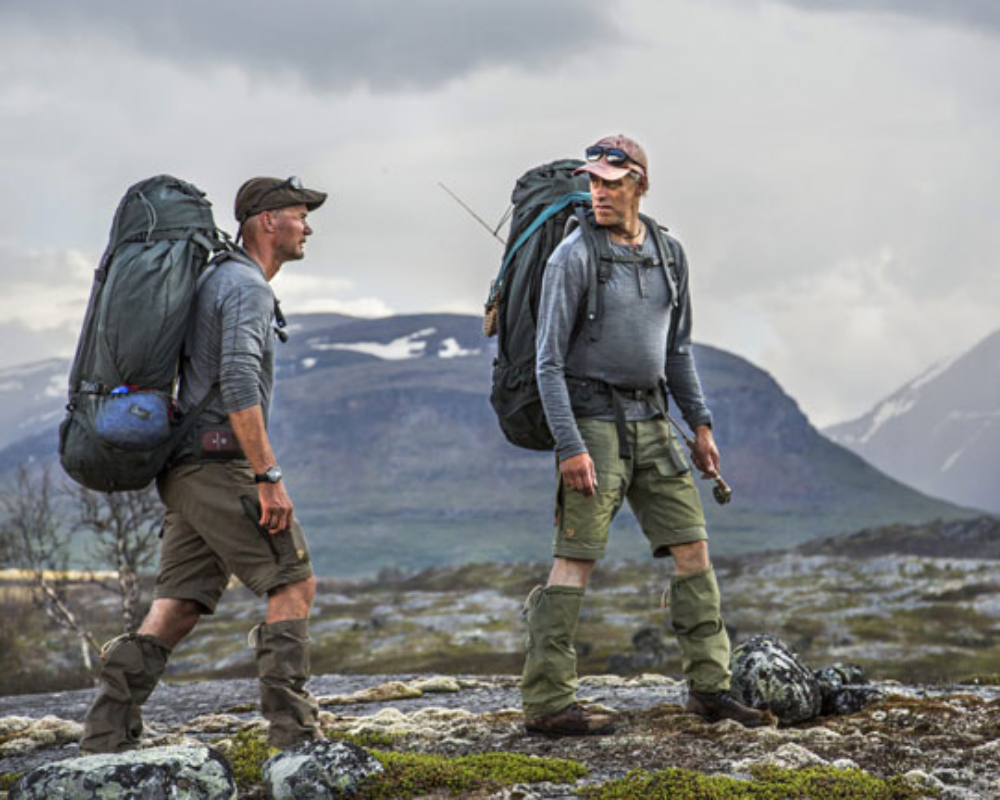
It’s easy to become overwhelmed by packing lists before embarking on a journey like this — especially when it comes to deciding what clothes to take! But if you follow the advice outlined above, you’ll be ready for anything that lies ahead – even without having a guide alongside you. So now that you know what special items are required for trekking in Sapa, why not start planning your next adventure?
Conclusion
Trekking in Sapa is an experience not to be missed. The stunning views, diverse wildlife, and friendly locals make it a true adventure of a lifetime. With careful planning, the right gear, and some knowledge of the local terrain, trekking in this region can be done without a guide – but only if you’ve got your heart set on an independent journey.
The rewards for going solo are great; incredible discovering hidden gems along the way that would otherwise go unnoticed, to forging connections with locals and feeling like part of their community as you explore together. Sure, there will be risks involved (such as getting lost or running out of supplies) so it pays to do your research ahead of time. But the sense of accomplishment gained by conquering those challenges makes every step worth its weight in gold.
Ultimately, whether you choose to trek independently or opt for guided tours, it comes down to personal preference and budget constraints. However, if you have the skill set skillset, and resources, taking on Sapa alone can give you memories that will last a lifetime!
